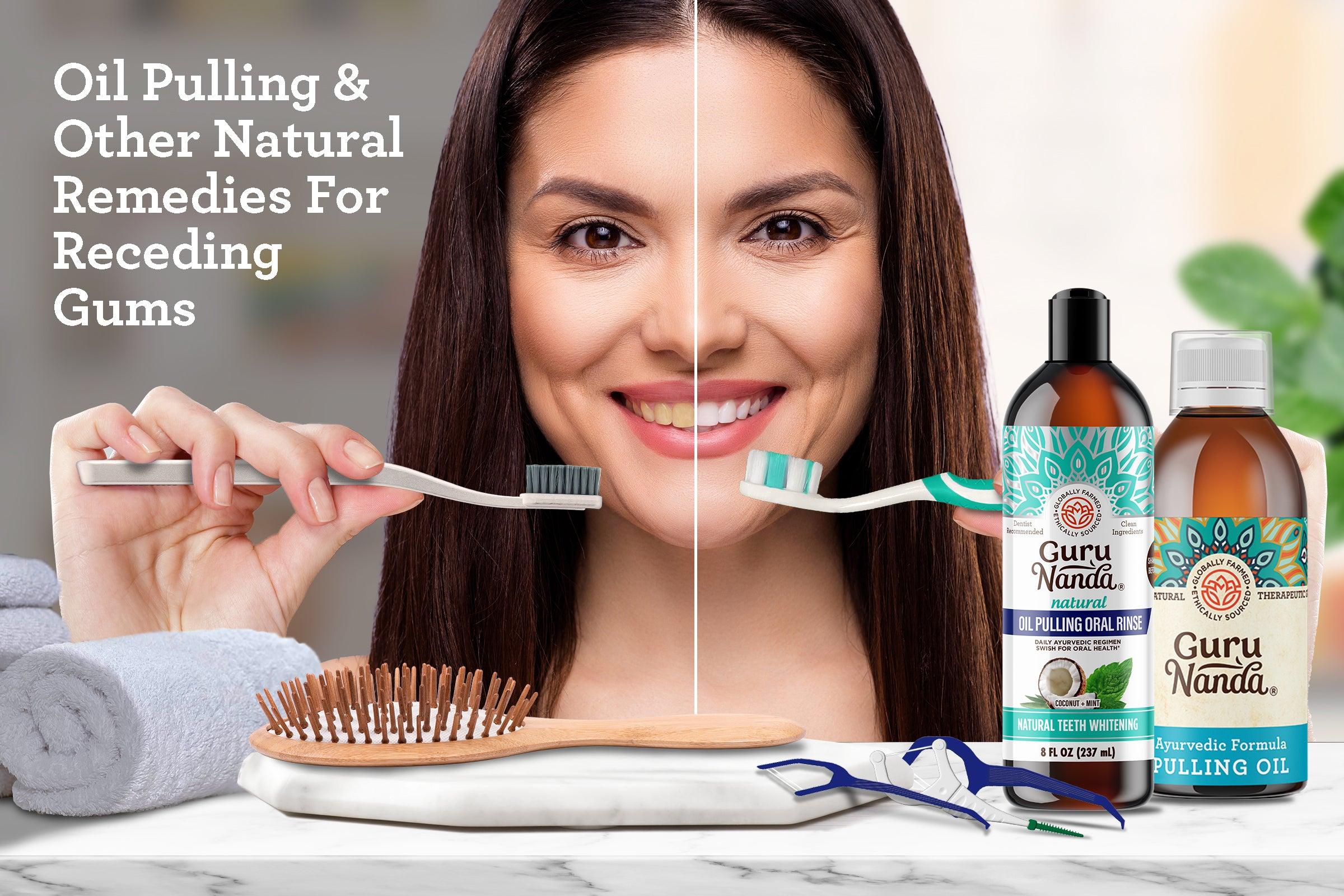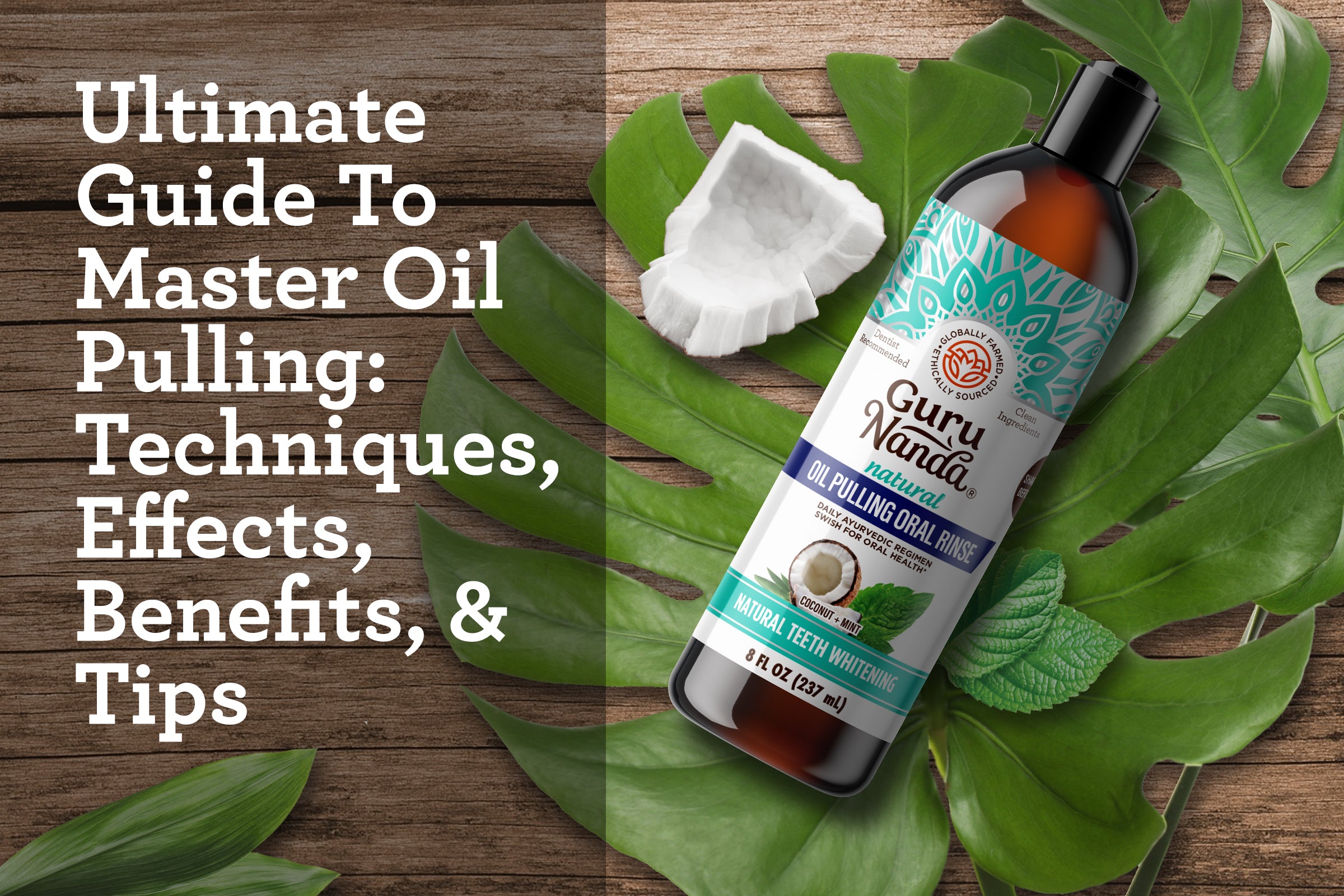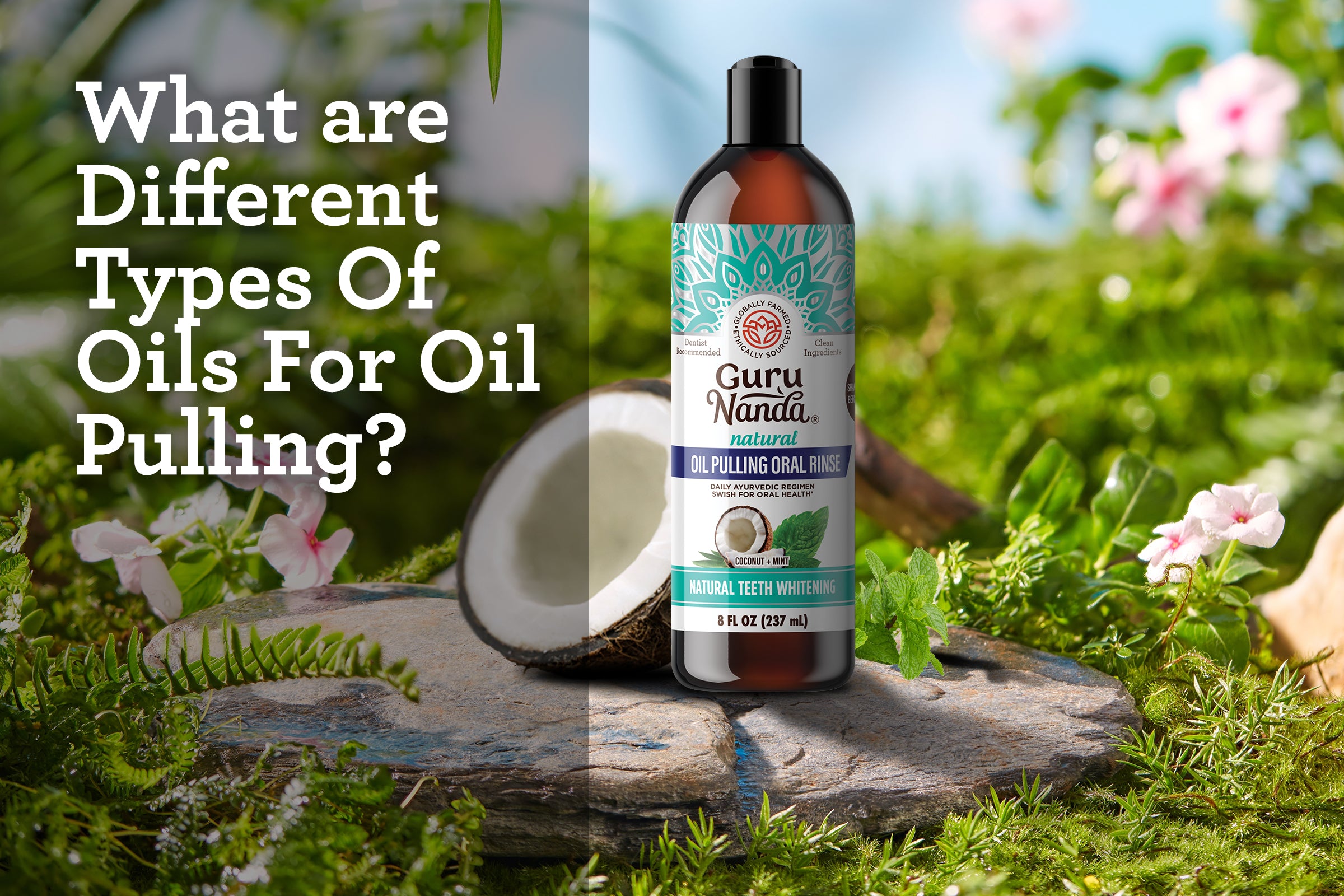Gum recession is a widespread concern, affecting around 50% of Americans over 30, and it can begin as early as the teenage years. Ignoring this issue could lead to serious dental emergencies, so it's crucial to address symptoms promptly by consulting a dentist. In the meantime, various natural strategies offer hope for mitigating mild cases and preventing further decline. This introductory guide will explore the phenomenon of receding gums and introduce natural remedies, including oil pulling, as potential aids in your dental health journey. [1]
What Are Receding Gums?
Gum recession, or gingival recession, occurs when the gum tissue around your teeth wears away or pulls back, exposing more of the tooth and its root. This condition can create small, vulnerable spaces where harmful bacteria thrive, leading to increased tooth sensitivity, plaque buildup, and advanced gum recession if unchecked. Contributing factors include poor dental hygiene, aggressive tooth brushing, aging, smoking, and genetics. Despite its gradual progression, which makes early detection challenging, tooth sensitivity often signals its onset. It's crucial to understand that while natural treatments can help manage gum recession and prevent it from worsening, they alone cannot reverse the condition. Additionally, untreated gum recession can escalate into periodontal diseases, a group of serious infections that damage the soft tissue and bone supporting the teeth. These diseases can lead to further complications, such as severe infections, and tooth & bone loss, underscoring the importance of early intervention and comprehensive dental care to mitigate risks and protect oral health. [2]
Symptoms Of Receding Gums
Gum recession manifests through several key signs, including swollen gums (gums that appear red, puffy, and tender due to irritation or inflammation), which are often an early indicator of recession. Sensitive teeth (teeth that experience discomfort when exposed to hot, cold, or sugary substances due to exposed roots) also result from this condition. Moreover, receding gums may develop periodontal pockets (gaps between the teeth and gums that harbor bacteria and escalate gum disease), fostering bacteria that cause bad breath and signal further gum disease. Additionally, as gums recede, they lose their grip on teeth, leading to loosening and increased mobility (teeth that move more than usual, indicating weakened support). A common contributing factor to gum recession is the buildup of plaque at the gum line (a film of bacteria causing irritation and inflammation), which, if not removed, leads to inflammation, and bleeding after brushing and flossing which is a common sign of gum irritation or early-stage gum disease (gingivitis). Over time, if the plaque is not adequately controlled, it can lead to more severe gum conditions such as periodontitis. Addressing these symptoms promptly can help mitigate the progression of gum recession and maintain oral health.
Can Receding Gums Be Cured Naturally?
Gum health is crucial for overall dental wellness, and though gums don't regenerate like skin, proactive measures can help protect them from further damage. Home remedies can offer relief and prevent worsening conditions, despite their limitations in restoring gums to their original state. It's essential, however, to complement these natural strategies with professional dental consultations. Here, we will discover six effective natural approaches to support your gum health and keep your smile strong.
Natural Ways To Prevent Receding Gums
Exploring natural remedies for gum health can offer relief and preventive measures against gum issues without the need for invasive procedures. Here are several effective methods:
Brushing With Super Soft Toothbrush
Using a super soft toothbrush can help reduce the risk of irritating the gums and causing recession. This gentle approach ensures effective cleaning without harming sensitive gum tissues. Opting for a "soft as feather" toothbrush like GuruNanda's Butter On GumsTM can be particularly beneficial, as it protects your teeth and gums from damage while thoroughly cleaning the surfaces and spaces around your teeth.
Flossing
Flossing is essential in oral hygiene, as it removes plaque and food particles from areas a toothbrush can't reach, specifically between the teeth and under the gum line. This process is vital because these hidden zones are hotspots for bacterial growth, which can lead to tartar formation. Tartar, a hardened form of plaque, contributes to gum disease. Research indicates that regular flossing is linked to a slightly reduced prevalence of periodontitis. However, since this is a cross-sectional study, a causal relationship between flossing and periodontitis cannot be established; the study only shows a correlation at a specific point in time, not that one factor causes the other. Thus, daily flossing with high-quality flossers is crucial for preventing gum recession and maintaining overall dental health by keeping the areas between teeth clean and free from harmful bacteria. [3]
Receding gums & Oil Pulling
This ancient Ayurvedic technique offers numerous benefits and involves swishing oil in your mouth for about 5 to 20 minutes daily. Coconut oil, known for its antibacterial properties, shows efficiency in reducing plaque buildup, alleviating symptoms of dry mouth, and lessening gum inflammation—all of which can contribute to gum recession. A 2009 study also highlighted the benefits of sesame oil, though it noted limitations due to its focus on younger participants and small sample sizes. For those seeking a more efficient and clinically proven option, the GuruNanda Oil Pulling Rinse is an excellent choice. Its unique formulation, enriched with several essential oils and vitamins, delivers all these benefits in just 2 to 10 minutes, making it a more practical alternative to the traditional 20-minute regimen. This product not only improves oral hygiene by contributing to address issues like dry mouth and malodor but also helps in enhancing the color of your teeth. [4][5]
Mouthwash
Regular use of therapeutic mouthwashes can help reduce bacteria, control plaque accumulation, and maintain healthy gums. Essential oils like eucalyptus, tea tree, and peppermint are traditionally known for their antimicrobial properties and can be added to water to make a homemade rinse or found in pre-formulated products like GuruNanda’s Breath Harmonizer for safer, effective oral care.
Receding Gums & Essential Oils
Eucalyptus Oil
Using eucalyptus oil diluted in coconut oil at a 1:10 ratio, and massaging it onto your gums before rinsing, can be beneficial for gum health. Alternatively, you can add one to two drops of the oil to water and use it as a mouth rinse. Eucalyptus oil is recognized for its anti-inflammatory and germicidal properties, which may help regenerate gum tissue and reduce the presence of bacteria, thus serving as an effective option for maintaining gum health. [6][7]
Peppermint Essential Oil
Peppermint oil, known for its invigorating aroma, is also recognized for its antimicrobial properties that can help inhibit the growth of harmful oral bacteria. This makes it a valuable preventive measure against gum recession. For effective gum care, you can use peppermint oil diluted in coconut oil at a 1:10 ratio for massaging the gums followed by a thorough rinse. Alternatively, adding a few drops of peppermint oil to water and using it as a mouth rinse can also be beneficial. [8]
Tea Tree Oil
A study from 2013 underscores the efficacy of tea tree oil in minimizing harmful bacteria in the mouth, offering a natural pathway to maintain gum integrity and prevent recession. Using tea tree oil diluted in coconut oil at a 1:10 ratio for gum massages and rinsing afterward can be beneficial. Alternatively, adding a few drops of tea tree oil to water for a mouth rinse can also be effective. [8]
While essential oils like eucalyptus, tea tree, and peppermint are beneficial for oral health, they must be used cautiously to avoid irritation. For a safer, milder option, consider using pre-formulated products such as GuruNanda’s pulling oils. These products incorporate essential oils like tea tree, oregano, and peppermint in minimal quantities with more beneficial oils, and vitamins. Additionally, peppermint oil is included in GuruNanda’s original formula pulling oil and Cocomint pulling oils, providing effective antimicrobial properties in a gentler format. This approach allows you to enjoy the benefits of essential oils safely and effectively.
Other Preventive Care
Green Tea
Regular consumption of green tea, without added sugars or flavors, can offer antibacterial benefits, helping to promote periodontal health. Its natural properties inhibit bacterial growth, supporting overall dental health. [9]
Salt Water Rinses
Creating a simple saltwater solution and using it to rinse your mouth can help combat the bacteria that is potentially responsible for gum problems. Its soothing properties also reduce swelling. Rinsing two to three times daily can foster gum health.
It's crucial to recognize that while alternative methods like salt water rinses or regular consumption of green tea may support gum health, they should not be seen as replacements for standard oral hygiene practices. These approaches are meant to complement and enhance daily oral care routines. Effective oral health management necessitates a commitment to regular practices such as oil pulling, tongue scraping, brushing, flossing, rinsing, and attending dental check-ups. Additionally, maintaining a healthy diet, minimizing the intake of sugary foods, and reducing or quitting smoking are also essential steps. Together, these measures form a comprehensive strategy for preserving oral health.
How To Prevent Gum Recession?
To safeguard your oral health and ward off gum recession, adopting a thorough oral hygiene routine is essential. Begin with oil pulling which can help diminish bacteria and plaque, using this ancient technique of swishing oil in the mouth. Next, employ tongue scraping to help remove the bacteria that causes bad breath that leads to a cleaner mouth and fresher breath. Continue with brushing using a soft-bristled toothbrush like Butter On GumsTM to clean your teeth thoroughly without harming the gums; remember, gentle strokes are key to preventing gum damage. Incorporate flossing to target the plaque and bacteria lurking between teeth and under the gumline, crucial spots missed by your brush. Flossing regularly is vital for staving off gum recession and maintaining dental health. Cap off your regimen with a therapeutic mouthwash like Breath Harmonizer rinse to eliminate any residual bacteria. This complete routine—oil pulling, tongue scraping, brushing, flossing, and rinsing—builds a formidable defense for your oral health, keeping both gums and teeth in top condition.
Conclusion
In conclusion, addressing gum recession requires a multi-faceted approach that blends professional dental care with natural remedies and a robust oral hygiene routine. Practices like oil pulling, using essential oils, and drinking green tea complement traditional methods of brushing, flossing, and rinsing. These practices can help support gum health and potentially slow down the progression of gum recession, as well as help delay its onset, but should not be relied upon as sole treatments for combating existing gum conditions. While natural remedies offer significant benefits, they should not replace regular dental check-ups and cleanings. By integrating these holistic and conventional strategies, individuals can effectively safeguard their gum health, ensuring a healthy smile and overall dental wellness for years to come.
FAQs
Q: What causes gum recession?
A: Gum recession can be caused by several factors, including aggressive brushing habits, poor oral hygiene, periodontal disease (gum disease), genetic predisposition, tobacco use, smoking, hormonal changes (such as those occurring during pregnancy), and even improper dental care, such as ill-fitting dentures or braces.
Q: Can the gum recession be reversed?
A: Once the gum tissue has receded, it cannot grow back on its own. However, the progression of gum recession can be slowed with proper dental care and treatment. In some cases, dental procedures like gum grafts can restore the gum line and protect exposed tooth roots.
Q: What are the symptoms of gum recession?
A: Symptoms include increased tooth sensitivity (especially to hot, cold, or sweet stimuli), the appearance of teeth looking longer due to gum recession, exposed tooth roots, loose teeth, and changes in the color of the tooth near the gum line. Some people may also notice a notch at the gum line.
Q: Can oil pulling reverse gum recession?
A: While oil pulling may help reduce inflammation and bacteria, leading to healthier gums, it cannot reverse gum recession. Gum tissue that has already receded cannot grow back. However, oil pulling may help slow down further progression of recession and reduce the risk of periodontal diseases. [10]
Q: How often should I do oil pulling for it to be effective against gum recession?
A: For the best results, it's recommended to practice oil pulling daily, preferably in the morning before eating or drinking anything. Consistency is key to seeing improvements in oral health and in managing symptoms associated with gum recession.
Q: Are there any specific oils recommended for oil pulling to help with gum recession?
A: Coconut oil is often recommended for oil pulling due to its high lauric acid content, which offers anti-inflammatory and antimicrobial properties that can be beneficial for gum health. Our product, GuruNanda Oil Pulling Rinse, combines the benefits of coconut oil with additional essential oils to enhance its effectiveness. [11]
[1] - https://www.nidcr.nih.gov/research/data-statistics/periodontal-disease/adults
[2] - https://www.ncbi.nlm.nih.gov/pmc/articles/PMC4944726/
[3] - https://www.ncbi.nlm.nih.gov/pmc/articles/PMC5601277/
[4] - https://www.ncbi.nlm.nih.gov/pmc/articles/PMC7535963/
[5] - https://pubmed.ncbi.nlm.nih.gov/19336860/
[6] - https://www.ncbi.nlm.nih.gov/pmc/articles/PMC10044518/
[7] - https://pubmed.ncbi.nlm.nih.gov/18672986/
[8] - https://www.ncbi.nlm.nih.gov/pmc/articles/PMC4054083/
[9] - https://www.ncbi.nlm.nih.gov/pmc/articles/PMC3459493/
[10] - https://www.ncbi.nlm.nih.gov/pmc/articles/PMC9602184/
[11] - https://www.ncbi.nlm.nih.gov/pmc/articles/PMC6923562/






